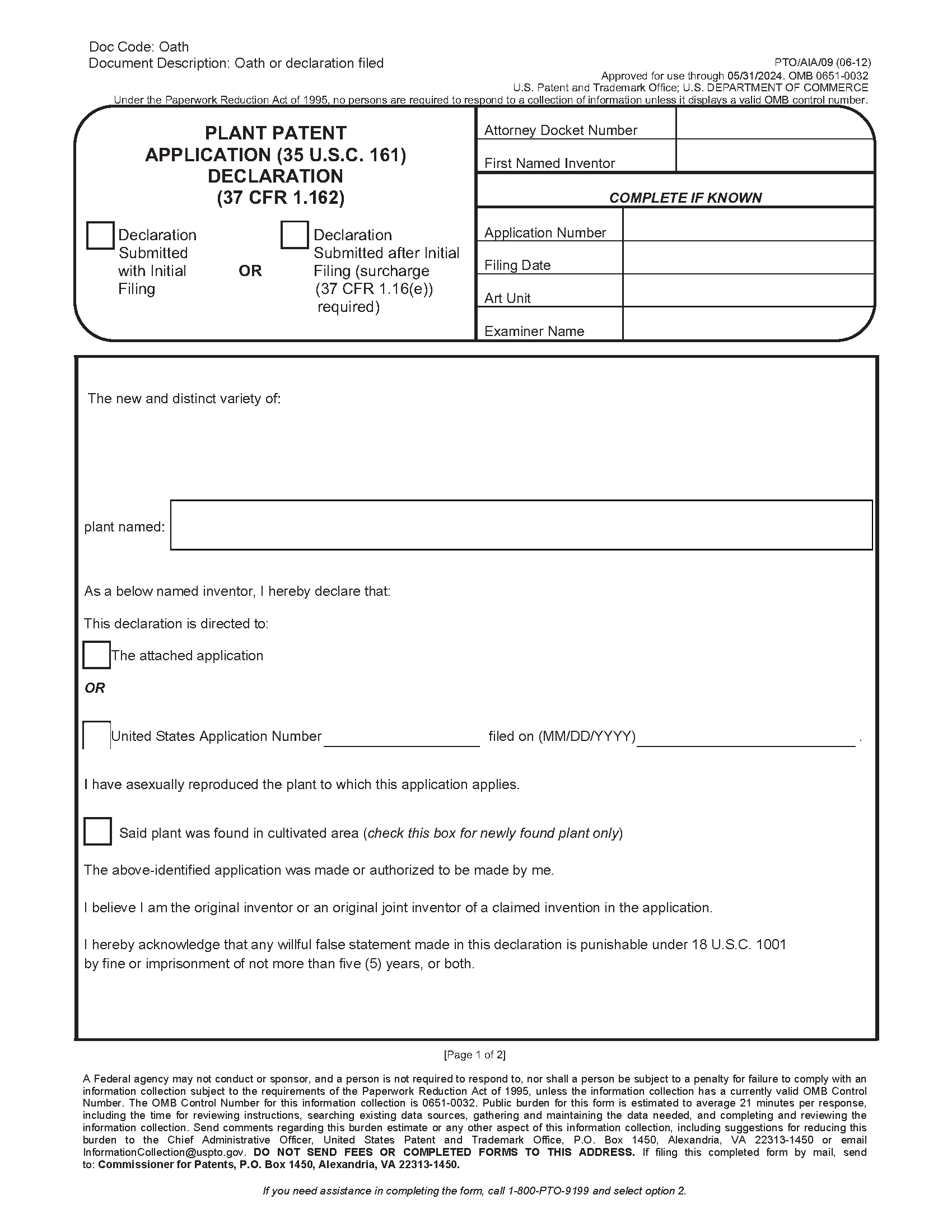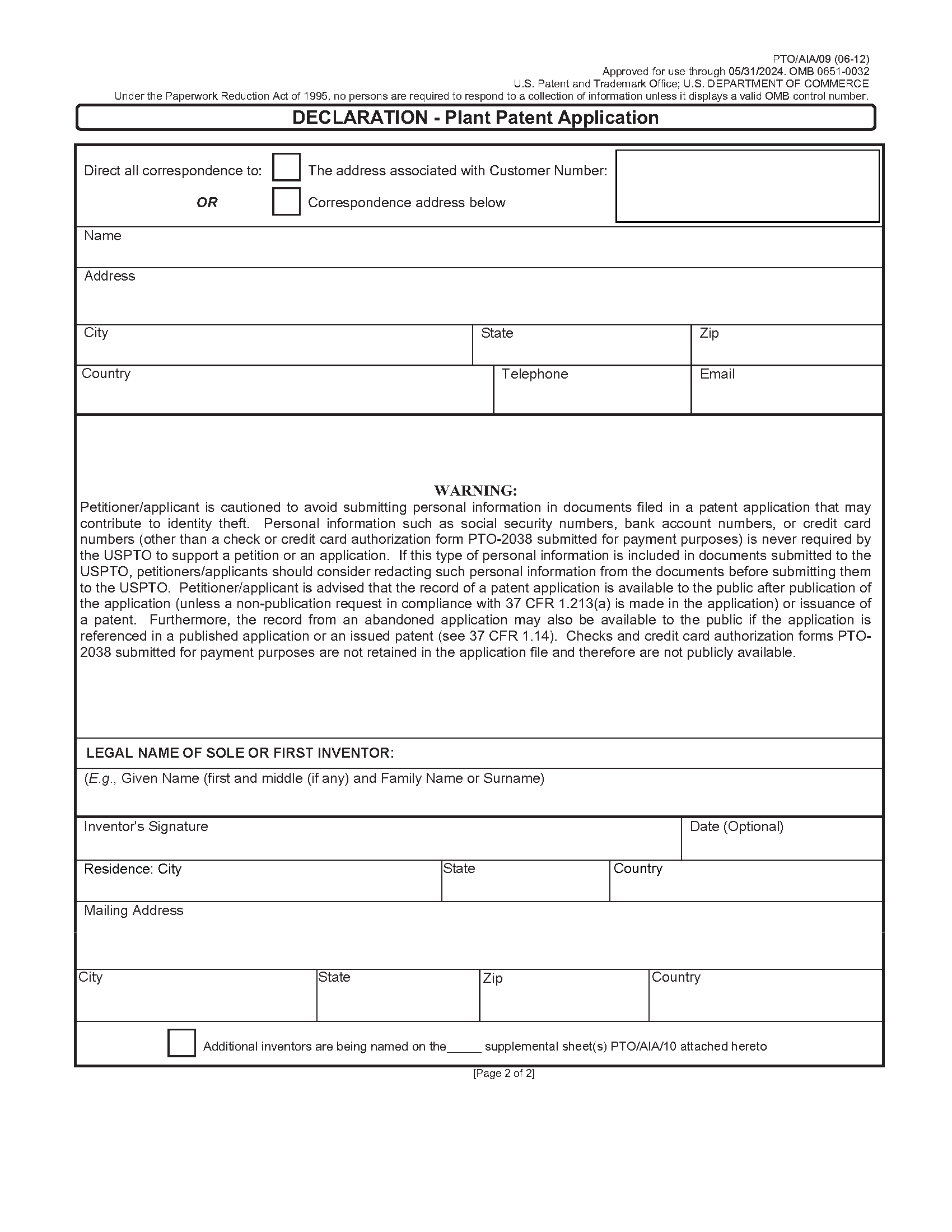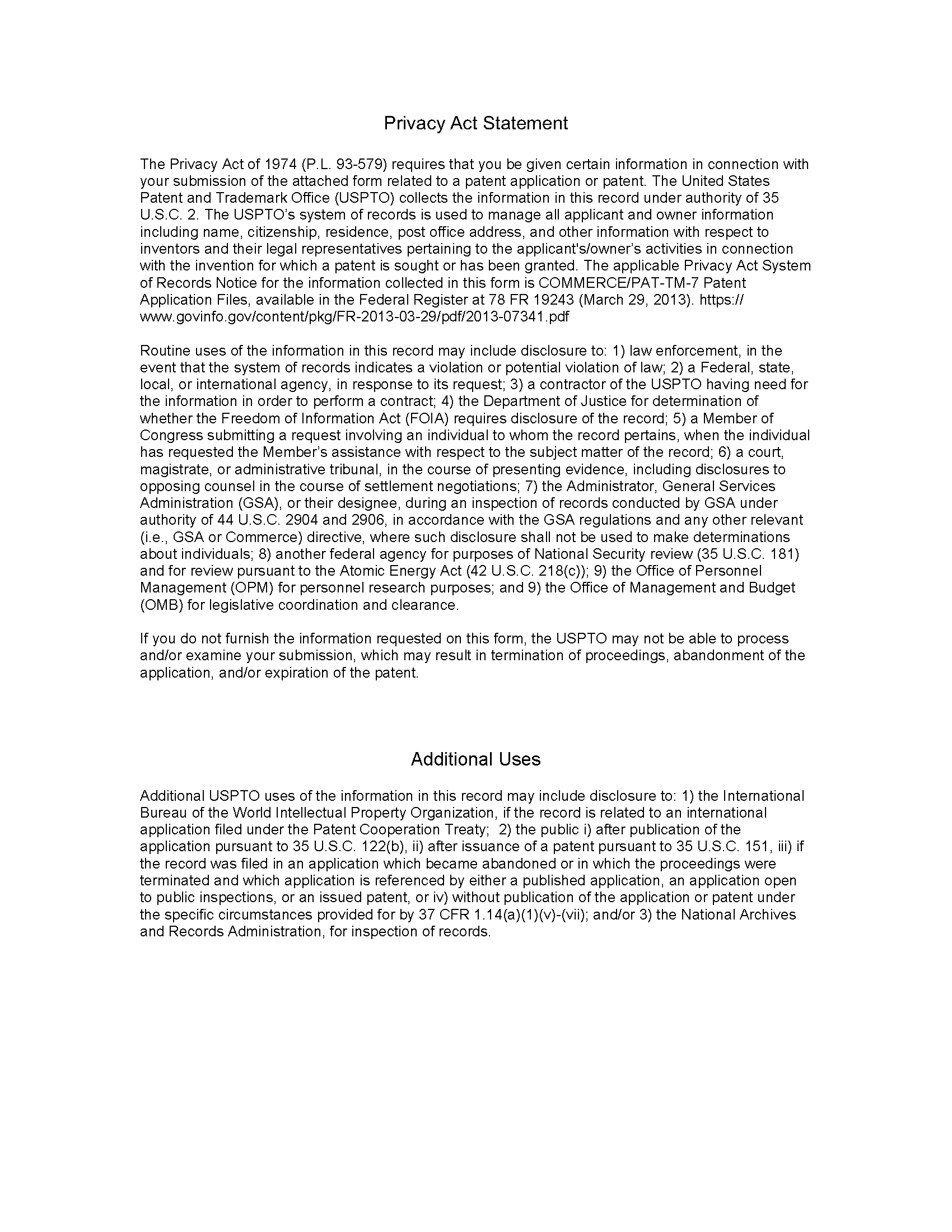1604 Applicant, Oath or Declaration [R-01.2024]
37 CFR 1.162 Applicant, oath or declaration.
[Editor Note: Applicable only to patent applications filed under 35 U.S.C. 111(a) or 363 on or after September 16, 2012.]
The inventor named for a plant patent application must be the person who has invented or discovered and asexually reproduced the new and distinct variety of plant for which a patent is sought. The inventor's oath or declaration, in addition to the averments required by § 1.63 or § 1.64, must state that the inventor has asexually reproduced the plant. Where the plant is a newly found plant, the inventor's oath or declaration must also state that it was found in a cultivated area.
37 CFR 1.162 (pre-AIA). Applicant, oath or declaration.
[Editor Note: Not applicable to patent applications filed under 35 U.S.C. 111(a) or 363 on or after September 16, 2012.]
The applicant for a plant patent must be the person who has invented or discovered and asexually reproduced the new and distinct variety of plant for which a patent is sought (or as provided in §§ 1.42, 1.43 and 1.47). The oath or declaration required of the applicant, in addition to the averments required by § 1.63, must state that he or she has asexually reproduced the plant. Where the plant is a newly found plant, the oath or declaration must also state that it was found in a cultivated area.
The inventor's oath or declaration, in addition to the averments required by 37 CFR 1.63 or 37 CFR 1.64, (or, for applications filed before September 16, 2012, pre-AIA 37 CFR 1.63) must state that the inventor has asexually reproduced the plant. Where the plant is a newly found plant, the inventor's oath or declaration must also state that it was found in a cultivated area.
A Plant Patent Application (35 U.S.C. 161) Declaration, Form PTO/AIA/09, may be used to submit a declaration in a plant application filed on or after September 16, 2012. See MPEP § 602.01(a).
35 U.S.C. 100(f) defines the term "inventor" as the individual or, if a joint invention, the individuals collectively who invented or discovered the subject matter of the invention. In an application for a plant patent, there can be joint inventors, as there may be multiple steps in developing a plant invention. For example, if one person discovered a new and distinct plant and asexually reproduced the plant, such person would be a sole inventor. If one person discovered or selected a new and distinct plant, and a second person asexually reproduced the plant and ascertained that the clone(s) of the plant were identical to the original plant in every distinguishing characteristic, the second person would properly be considered a joint inventor. See Ex parte Kluis, 70 USPQ 165 (Bd. App. 1945). If a group of staff or collaborators contributed to the final plant invention, everyone would be considered joint inventors. However, an inventor may direct that the step of asexual reproduction be performed by a custom propagation service or tissue culture enterprise. Those performing the service would not be considered joint inventors.




